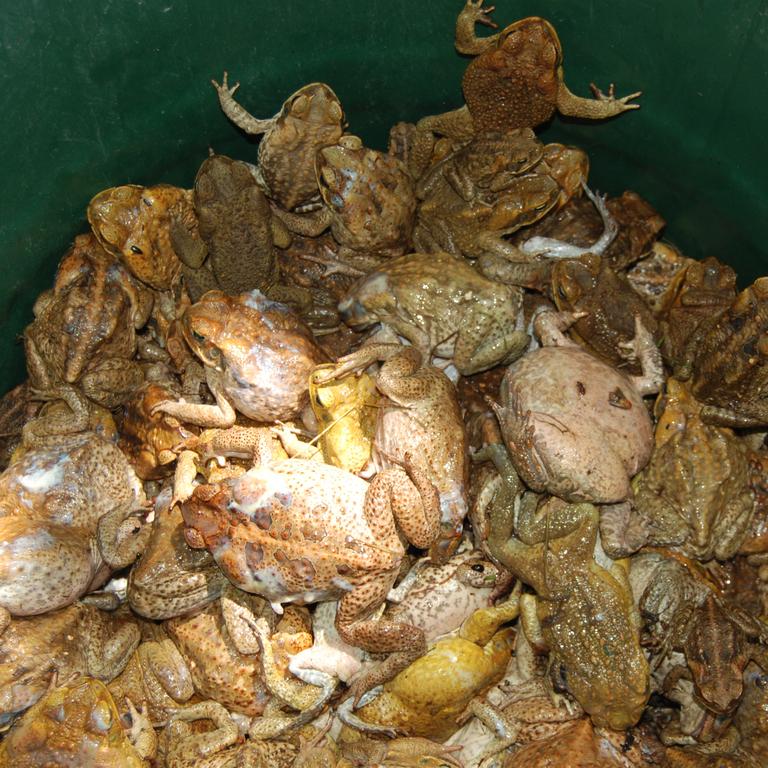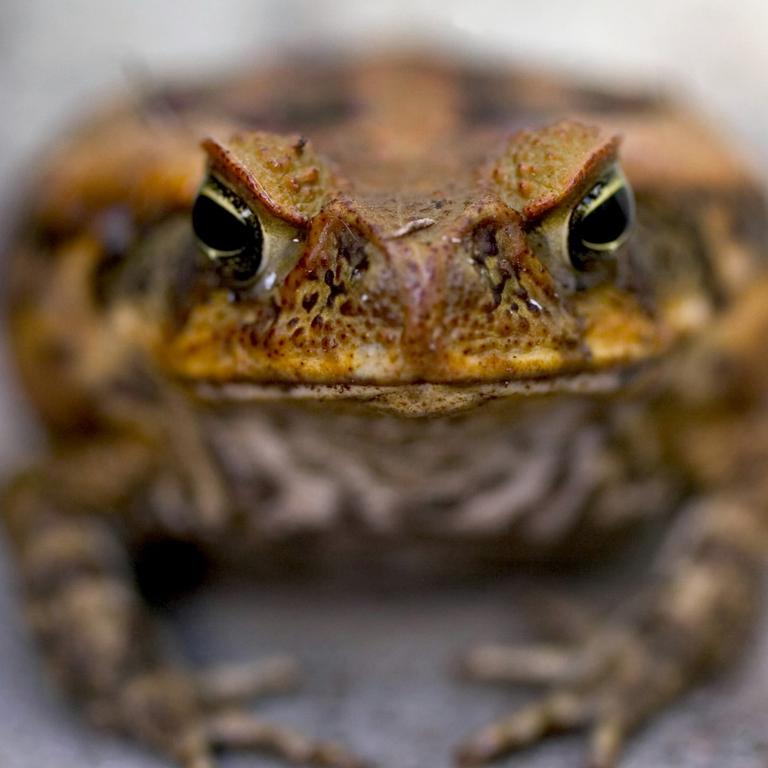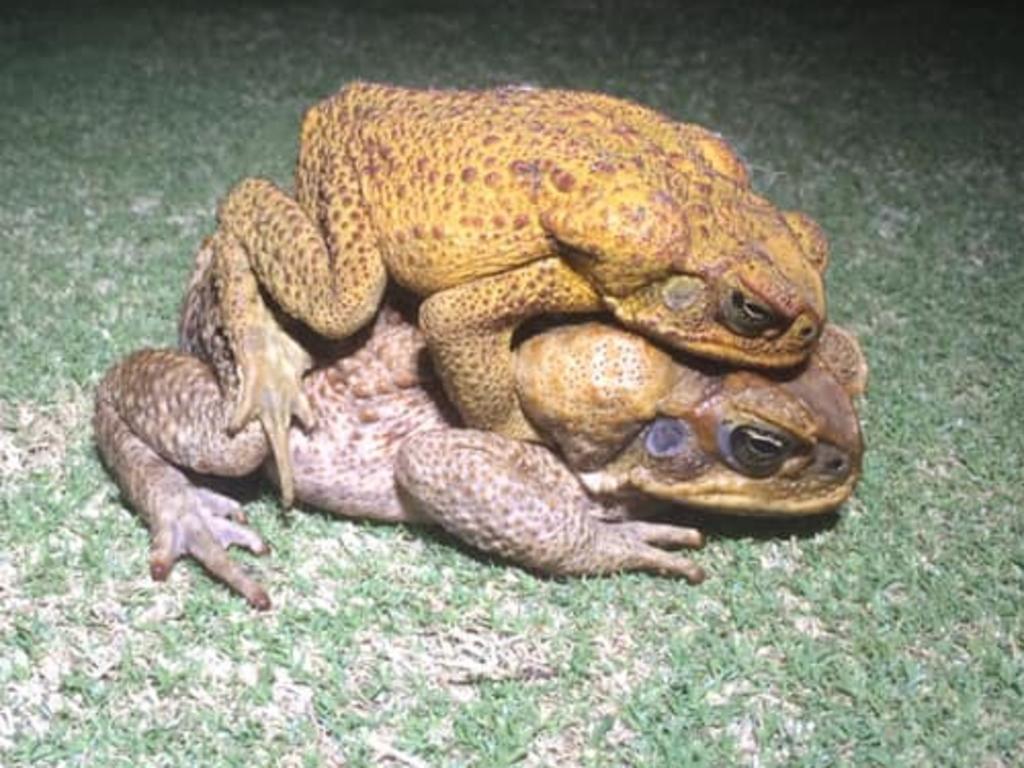Cane toads showing signs of rapid evolution as they continue Australian invasion
Some might argue they should never have been brought here in the first place but they’re here now and they’re only becoming more widespread.
The pesky cane toad that was introduced to try and “control” a native insect but has instead altered the balance of Australia’s ecology is getting faster and stronger as it continues to spread across the country.
That’s the finding of new research from Australian academics who analysed the cane toads spreading across northern Australia and compared them to ones in north Queensland, where they were first introduced in 1935.
RELATED: Russell Coight snake tips help girl

RELATED: Tiny kitten rescued from inside wall
The team found that “locomotor performance” – how the toads move – varied by geography, and the closer toads were to the “invasion front” the quicker they moved, supporting a theory the toad’s invasion has generated rapid evolutionary shifts for the animal.
The fact that cane toads have only existed in Australia for 85 years provided a unique opportunity to the researchers to observe rapid evolution.
Normally scientists are comparing traits in animals that may have been separated for centuries or even millennia, and they can be trying to compare hard to quantify traits like brain cognition.
Cane toads in north Queensland and ones in places like the Northern Territory and WA haven’t been separated that long, and the traits examined in the study – things like how far they can hop and how long their legs are – can be easily measured.
RELATED: Farmer surprised by rare find inside egg

RELATED: Tough new penalties to target animal abuse
The researchers raised toads from different populations in a “common garden”, which allowed them to observe that some of the traits helping the toads to continue their invasion of Australia are being passed down through generations.
Similar findings were made on toads from populations in the wild.
The WA toads were bigger, with longer legs and larger heads. They also had bigger rear feet and smaller front feet.
The study used 163 toads from El Questro, Oombulgurri, Purnululu and Wyndham in Western Australia, where the toads were first detected in 2009.

RELATED: Insane moment eel escapes bird’s stomach
It compared them to 148 toads from Innisfail, Townsville and Tully, where populations have existed for more than eight decades.
In a series of tests, researchers made the toads jump while high-speed cameras recorded their performance.
They also set up a dedicated “raceway” to pit the toads against each other.
The wild-caught WA toads could reach higher speeds on their hops.
In the common garden, the offspring of the Queensland toads also exhibited “flatter take off angles and achieved lower heights”.
Previous research has found the cane toads native to South America more closely resemble the ones introduced in Queensland than the ones that have made it to WA.

The researchers noted male Qld toads are typically faster and have longer legs, but the toads who spread across Australia couldn’t move faster than the females or they would outrun them and have no way of breeding.
They also noted a “strong sexual selection” for shorter front limbs, because they allow the male toads to cling more tightly to the female toads “for success in sexual struggles”.
The research was conducted by academics from The University of Sydney, The Australian National University, Macquarie University.
Their findings are published in The Proceedings of the Royal Society Biological Sciences journal.



